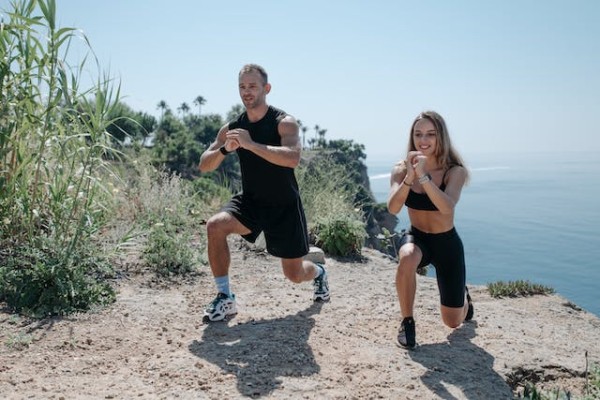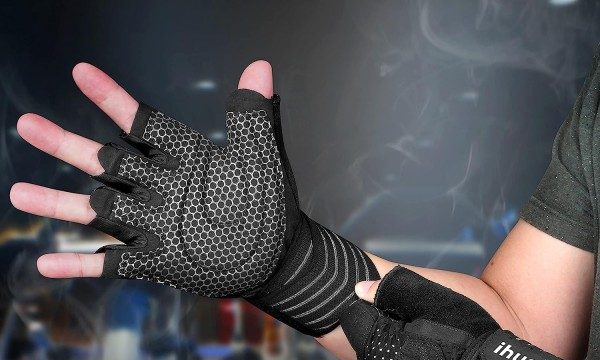Did you know that wrist pain is a common issue among cyclists? Whether you’re a casual rider or a dedicated cyclist, dealing with discomfort in your wrists can put a damper on your cycling experience.
But fear not, because experts have some valuable tips to help you prevent wrist pain and enjoy your rides to the fullest. So, if you want to find out how to keep your wrists pain-free and make the most out of your cycling adventures, keep on reading.
5. Proper Bike Fit

To prevent wrist pain when cycling, it’s crucial to ensure that your bike is properly fitted to your body. A proper bike fit is essential in reducing the strain on your wrists during rides. When your bike isn’t fitted correctly, it can lead to unnecessary pressure on your wrists, resulting in pain and discomfort.
To achieve a proper fit, start by adjusting the saddle height. Your knees should be slightly bent when the pedal is at its lowest point. Next, adjust the handlebar height and reach. Your arms should be slightly bent with a relaxed grip on the handlebars.
Finally, check the position of the brake levers. They should be easily accessible without straining your wrists. Taking the time to ensure a proper bike fit can significantly reduce the risk of wrist pain when cycling.
4. Correct Hand Positioning
Ensure proper hand positioning on the handlebars to further reduce strain on your wrists during cycling. Placing your hands correctly can help distribute weight evenly and maintain a neutral wrist position.
The most common hand positions on drop handlebars are the hoods, tops, and drops. When riding on the hoods, your wrists should be straight, with your hands resting comfortably on the brake hoods. Avoid excessive bending or extending of your wrists, as this can lead to discomfort.
On the tops, keep your wrists straight and your fingers wrapped around the bar. This position is ideal for climbing or when you need more control.
When riding in the drops, your wrists should be straight and your fingers curled around the bar, providing a lower and more aerodynamic position.
3. Strengthening Exercises

You can strengthen your wrists and reduce the risk of pain by incorporating specific exercises into your cycling routine. Strengthening exercises help improve the stability and endurance of the muscles and tendons in your wrists, making them less prone to fatigue and strain.
One effective exercise is wrist curls, where you hold a light dumbbell or a water bottle and curl your wrist upwards and downwards.
Another exercise is the wrist extension, where you hold the dumbbell or water bottle with your palm facing downwards and lift it by extending your wrist.
Additionally, performing forearm planks and push-ups can also help strengthen your wrists and improve overall upper body strength.
Remember to start with light weights and gradually increase the intensity as your wrists become stronger.
2. Use of Padded Gloves

Padded gloves can provide an extra layer of cushioning and support to your hands, reducing the impact and pressure on your wrists while cycling. The padding in the gloves helps to absorb shock and vibrations that can lead to discomfort and pain.
Additionally, the gloves can provide a better grip on the handlebars, reducing the strain on your wrists and allowing for a more comfortable riding experience.
Look for gloves specifically designed for cycling, with gel or foam padding in the palm area. Make sure the gloves fit properly and aren’t too tight, as this can restrict blood flow and cause discomfort.
1. Regular Stretching and Rest Breaks
To further alleviate wrist pain when cycling, incorporating regular stretching and rest breaks into your routine is crucial. Stretching exercises help improve flexibility and reduce muscle tension in the wrists, preventing overuse injuries.
Before and after your ride, take a few minutes to stretch your wrists, fingers, and forearms. Simple stretches like wrist circles, finger extensions, and forearm flexor stretches can be effective.
Additionally, make sure to take regular rest breaks during your ride. This allows your wrists to rest and recover from the repetitive motion of cycling. Take short breaks every 30 minutes or so to stretch your wrists and shake out any tension.
Frequently Asked Questions
How Can I Adjust My Bike Saddle to Prevent Wrist Pain?
To prevent wrist pain while cycling, start by adjusting your bike saddle. Make sure it’s at the correct height and angle so that your wrists are in a neutral position. This will reduce strain on your wrists and prevent pain.
Additionally, consider using padded gloves or handlebar tape to provide extra cushioning and support. Remember to listen to your body and take breaks if you start to feel discomfort.
Can Wearing Wrist Braces While Cycling Help With Wrist Pain?
Wearing wrist braces while cycling can help alleviate wrist pain. The braces provide support and stability to your wrist, reducing the strain and pressure placed on it during cycling. By immobilizing the wrist, they prevent excessive movements that can lead to pain and discomfort.
Additionally, the compression provided by the braces can help reduce swelling and inflammation. It’s important to choose braces that are specifically designed for cycling and properly adjust them for maximum benefit.
How Long Should I Rest Between Cycling Sessions to Prevent Wrist Pain?
To prevent wrist pain when cycling, it’s important to give your wrists enough rest between sessions. The amount of rest needed can vary depending on various factors, such as your fitness level and the intensity of your workouts.
However, a general guideline is to rest for at least one to two days between cycling sessions. This will allow your wrists to recover and reduce the risk of developing pain or injury.
